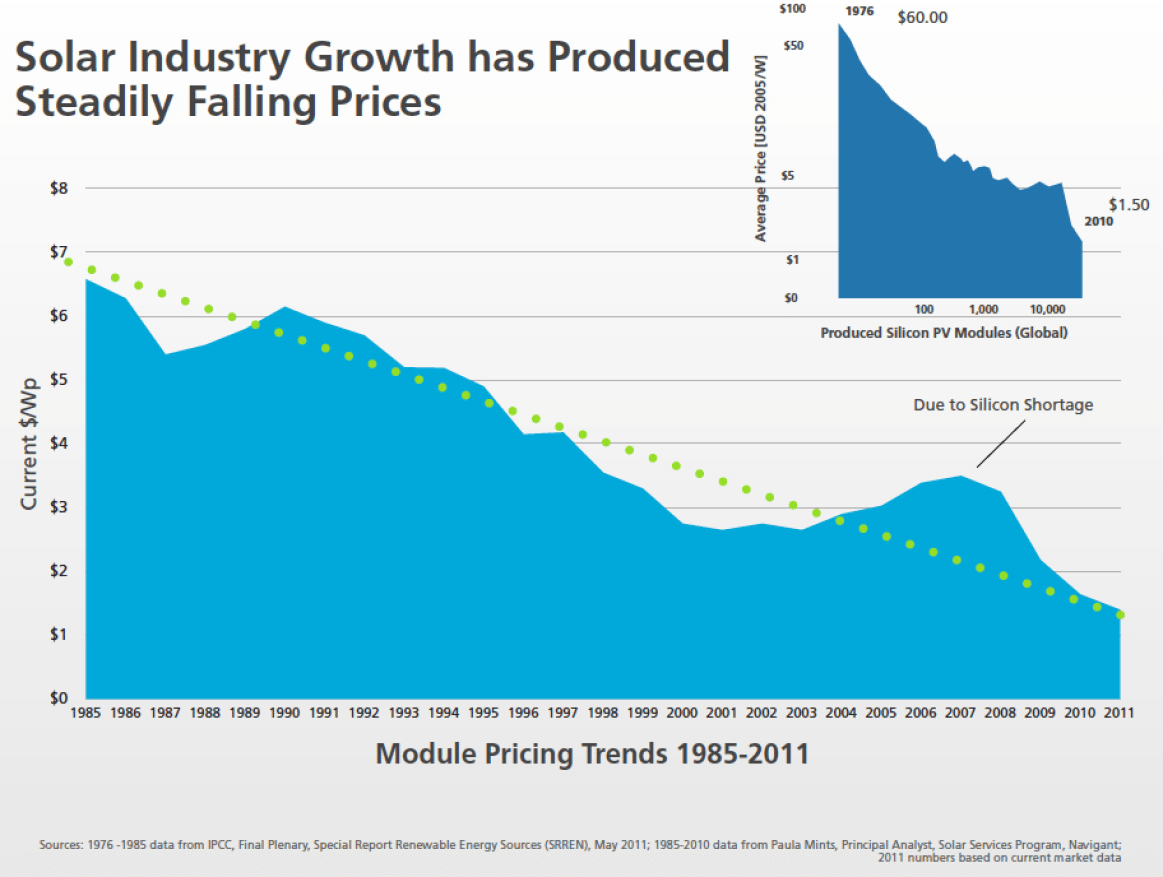


On August 31, 2011, American solar module manufacturer, Solyndra announced bankruptcy. This news came one day after the DOE (Department of Energy) determined that a second restructuring was not feasible.
Solyndra was but one of three U.S. solar panel manufacturers to announce closure during the first week of September. Solyndra however takes center stage because in 2009, the DOE awarded Solyndra $535 million in loan guarantees as part of the U.S. Federal Stimulus Program.
What effect will Solyndra’s bankruptcy have on U.S. Solar Energy manufacturing?
In 172 years of solar evolution, the United States has been and integral part of solar energy research and development. Some examples are:
- In 1838, A.E. Becquerel is credited with discovering the Photovoltaic Effect.
- In 1883, Charles Fritts created the first working solar cell.
- In 1977, The Solar Energy Research Institute was founded.
- In 2008, solar cell efficiency achieved record-breaking heights with a PV device that converts 40.8% of sunlight into electricity.
While Solyndra was not a major supplier, what the Solyndra crisis teaches us is that the real competition, which is cost, must be confronted.
Better Business
Current market data illustrates that solar PV module prices have steadily decreased from $7/Watt in 1985 to $1.50/Watt in 2011 Module Pricing Trends. When the silicon shortage hit the industry prices increased briefly giving companies like Solyndra an edge with silicon free alternatives. The silicon shortage did not last however and prices continued to decrease
The Solar Energy Industries Association, which represents nearly 5,000 companies in the United States, reported that the solar industry continues to be the fastest growing industry in America with a 69% increase over second quarter reports from 2010. Job growth in the solar industry is estimated to increase 26% providing 24,000 jobs over the next year.
Solar Energy Appeal
Solar energy adds value to commercial and residential properties, making the consumer an investor who profits as well, but what are the other advantages?
| Economic | Environmental | Social |
| Fast | Clean | Supports future demand |
| Predictable | Quiet | National energy independence |
|
Local Production |
Uses little water No emissions |
Creates local jobs |
In the United States, future legislation will raise the standard of environmental requirements for energy providers. Along with tough legislation state and federal government will continue to provide incentives and compensation by way of credits and rebates to consumers and providers alike to ensure swift compliance.
Harnessing Solar
The sun has been a constant source of light and energy in our solar system since the beginning of time. Whether we harness it or not, every day the sun rises from the east, sets in the west, and remains the center of our universe.
For 172 years and counting scientist around the world have studied ways the Photovoltaic Effect could be harnessed to benefit mankind. Solar energy does not have to be valued to exist, but in finding its value we have created an opportunity for the future to move beyond the present economically, environmentally, and socially.
Comments
There was a recent piece in the New Yorker entitled A Waste of Energy it is definitely worth reading:
Two years ago, the solar company Solyndra was a darling of the Obama Administration. The company had received more than five hundred million dollars in loan guarantees from the Department of Energy, and was building a factory to manufacture a revolutionary new successor to the solar panel—one that didn’t require expensive silicon and came in a convenient tube format. It seemed like an ideal show horse for the Administration’s green-jobs strategy. Vice-President Joe Biden spoke by video at the plant’s groundbreaking ceremony, saying that the company was creating “the jobs of the future.” The following May, Obama gave a speech at the factory, and declared, “The true engine of economic growth will always be companies like Solyndra.”
Read more http://www.newyorker.com/talk/financial/2011/10/10/111010ta_talk_surowiecki#ixzz1aLvacNtA